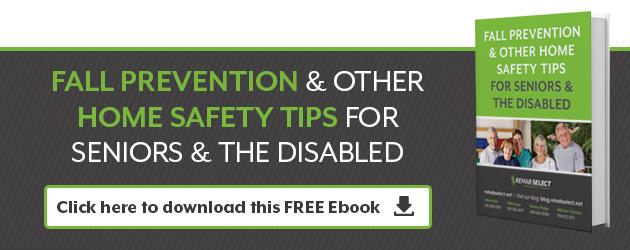 Falling is the number one cause of injuries – and injury death – among older Americans. It is somewhat shocking to discover that roughly one third of seniors in the United States experience a fall of some type every year that results in a trip to a hospital emergency room. In fact, fall related injuries have become so common for seniors that many physicians think of it as an epidemic, annually damaging the health of millions of otherwise healthy Americans.
Falling is the number one cause of injuries – and injury death – among older Americans. It is somewhat shocking to discover that roughly one third of seniors in the United States experience a fall of some type every year that results in a trip to a hospital emergency room. In fact, fall related injuries have become so common for seniors that many physicians think of it as an epidemic, annually damaging the health of millions of otherwise healthy Americans.
As frightening as these facts may be, though, the truth is that the great majority of these falls are quite preventable. And the first step in avoiding a potentially life altering injury of this type is becoming aware of some of the simple fall prevention measures that can be taken to dramatically reduce the chances of having such an accident in the home, and out.
Basic Fall Prevention Safety Measures
There are two key components to be aware of in decreasing the likelihood of suffering a dangerous fall as one grows older: your living environment and your own physical fitness. And the best first place to begin structuring fall prevention into your life is in the home. Some of the most effective steps to take are:
-
install non-skid bath mats or self-adhesive slip-resistant strips to tubs and showers
-
ensure that all stairs have solid hand rails on both sides
-
make sure all throw rugs throughout the home are slip-proof – even if that means taping them to the floor
-
have safety grab-bars installed in the shower and next to the toilet
-
place night lights throughout the home
-
remove items that are easy to trip over, such as ottomans in the middle of a room; tape electrical cords to the floor; keep hallways and areas around doors clutter free
-
brightly light home interiors so you can clearly see any potential tripping hazards
-
install anti-slip safety treads to all stairs, inside and out.
-
repair loose floor boards immediately; place household items in easy to reach locations
As uncomplicated as some of these fall prevention steps may seem, it is amazing how often they're missing from the homes of seniors. Yet taking the time to make sure they are implemented will dramatically reduce the changes of a serious fall in the home.
Additional Steps to Take
One aspect of fall prevention safety that is often overlooked is making sure you yourself are less inclined to take a tumble. Some key areas to be aware of include:
-
medications – since seniors are more likely to be taking therapeutic drugs, talk to your doctor about which ones may compromise balance & stability to see if there are alternatives available
-
clothing – make sure that you are wearing shoes with slip-resistant soles, and that fit properly. Also, hem pant cuffs and dresses so that they are not too long and could cause tripping.
-
stay fit – your own sense of balance, coordination, and flexibility goes a long way toward fall prevention. Remain as active as possible through doctor approved activities like water aerobics, walking, and dancing.
-
Involve your doctor – talk to your family physician if you have joint issues, dizziness, or any concerns about your own stability to see what measures can be taken to help reduce the associated risk of falling.
Becoming aware of the dangers falls present to seniors, and the many basic measures that can easily be incorporated into your life to reduce the risks of such events is a big step in avoiding such potentially dangerous accidents. And luckily, the most effective measures are easy to do, inexpensive, and add to peace of mind.





